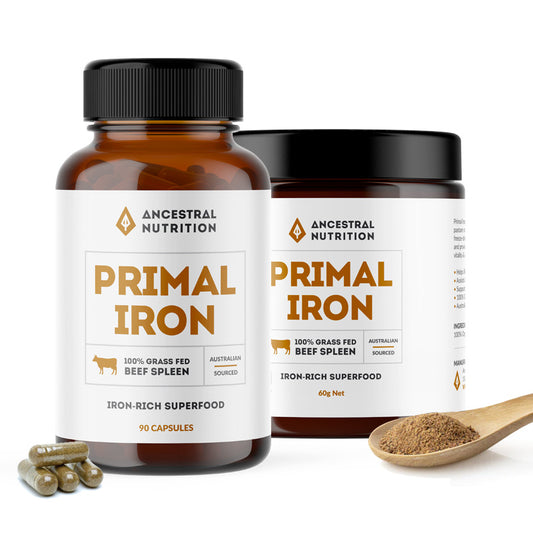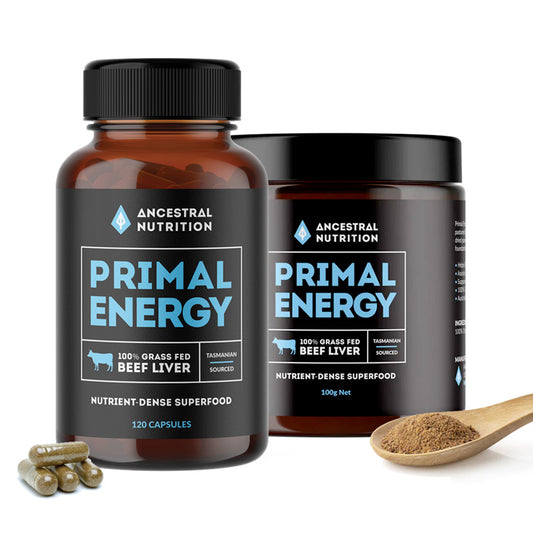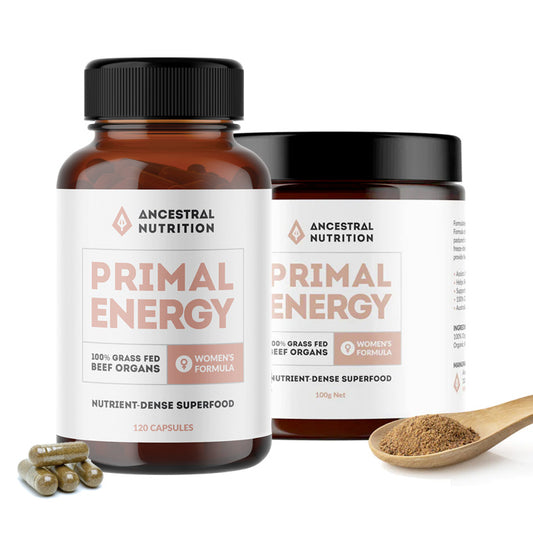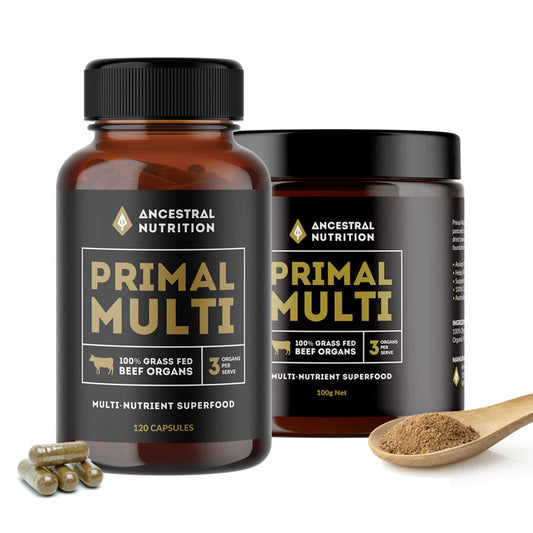How to Make Homemade Beef Tallow
article by Ancestral NutritionWhat is beef tallow and why is everyone talking about it?
Tallow is a nutrient-rich, old-fashioned cooking fat making a huge comeback for its flavour, versatility, and health benefits. We'll show you how to make tallow at home (for free!) using the fat we trimmed off a 3 kg porterhouse steak.
Why make tallow?
- High-heat friendly – won’t break down like many seed oils.
- Nutrient-dense – contains fat-soluble vitamins A, D, E, and K.
- Long shelf life – store it in the pantry for months without going rancid.
- Sustainable – turns kitchen scraps into something valuable.
- Multi-purpose – amazing for cooking and skincare.
In the world of nose-to-tail nutrition, tallow is having a serious revival, and for good reason. Once a staple in traditional kitchens, tallow (rendered beef fat) is rich in fat-soluble vitamins, stable at high heat, and incredibly versatile. By using every part of the animal, from organ meats to cooking fats, nose-to-tail eating honours the whole animal, reduces waste, and maximises nutrition.
Tallow is a nutrient-dense, shelf-stable cooking fat that can replace processed oils in your kitchen. It boasts a high smoke point, making it perfect for frying, roasting, and sautéing, while lending a subtle, savoury depth to dishes. Beyond the kitchen, tallow’s natural profile makes it a favourite in skincare, where it’s used in balms, soaps, and moisturisers for its nourishing, skin-loving properties.
Method – How to Render Beef Tallow
- Using a sharp knife, cut away all the fat from your beef (in this case, a 3 kg porterhouse) and chop it into small, even pieces. The smaller the pieces, the faster it will render.
- Place the chopped fat into a heavy-bottomed pot or pan. Add a small splash of water to the base — this prevents the fat from sticking and burning before it begins to melt.
- Set the pot over medium–high heat. As the fat melts, you’ll see liquid forming and small crispy bits (cracklings) starting to develop. The longer you cook, the deeper the flavour of your tallow will be. Stir occasionally to prevent sticking.
- Once most of the fat has melted and the cracklings are golden and crisp, carefully strain the liquid fat through a fine-mesh sieve or cheesecloth into a heat-proof dish or jar.
- Allow the tallow to cool slightly, then cover and refrigerate until set. It will turn a creamy white colour once solid. Stored in the fridge, it will last for months; at room temperature, keep it in an airtight container in a cool, dark place for up to 3 months.




